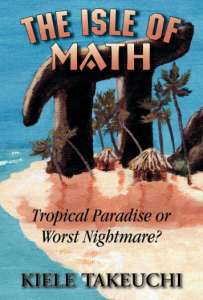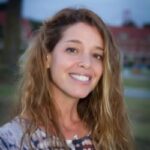(Don’t Let Me Be Misunderstood ~ Nina Simone)
My esteemed colleagues here at Ten Strands have been putting out some great blogs for a few months now, as you may know. Initially they encouraged me to join the fray, but they finally gave up after several polite (and not-so-polite) declinations. Chalk it up to shyness and the feeling that what I might say would be too abstract or worse, controversial.
However, when our E.D. Will Parish casually mentioned an idea for his upcoming post my ears pricked up and I promptly stole it. His opening words are lost to me now but for the three words that rang in my ears: Diatonic Phrygian Tetrachord. The mere mention of this four-chord sequence (one of the most common and recognizable throughout centuries of music and across every musical genre imaginable) catapulted me out of my commitment to bloglessness.
Music is my first love. The universal language; the great uniter, expressor of the unutterable, channeler of any emotion imaginable (and unimaginable), and a bridge across time, place, and culture. It is also a series of beautiful equations with seemingly infinite variations. Leading me to my nemesis, mathematics.
In school I was confounded by what my teachers were asking me to do—manipulating quantities, memorizing formulas and theorems, expressing ratios—for no perceivable reason other than to delay recess. It was not until I got out of school that I realized the beauty of numbers, and it was my feeling for music and love of nature that revealed what I had not seen before.
The AHA moment came when these two things collided:
(John Cotrane + Garden Snail = Blown Mind)
Audio Player(Spiral ~ John Coltrane)
The perfection of pattern became suddenly and strikingly clear, and variations on the theme everywhere—the Fibonacci numbers, the circle of fifths, harmonic resonance, the orbits of planets, the beating of the hummingbird’s wings, the melody from that song stuck in my head…Diatonic Phrygian Tetrachord.
I was confounded as to why my teachers had neglected to point any of this out in all the hours I was held captive. I’d have spent quite a bit more time vertical in my seat, rapt with attention, rather than horizontal drooling on my desk in a fitful slumber. In retrospect, I realized the handful of outstanding educators who made a lasting impression on me all had one thing in common: they made meaningful (and at times unusual or unexpected) connections as they taught. Mr. Lieberman (affectionately nicknamed “Chicken Legs” by yours truly, trash-talking during a staff vs. students basketball game) brought in young fiddlehead fern leaves to biology class where we studied them, then sautéed them in garlic butter over Bunsen burners and feasted while listening to music through the classroom speakers. Mr. Olson’s offbeat homework assignments—for example challenging us to bring in news clippings, song lyrics, or movie plot lines that paralleled Shakespeare’s classics.
Not everyone has the disposition to see deeper connections clearly. Even rarer is the ability to communicate these linkages to others in understandable and meaningful ways. This is where tools become important. We all use them to build, deconstruct, and recreate. Will used the Education and Environment Curriculum (EEIC) in his high school science classes and quickly understood that it was a unique and multifaceted tool. Accessible, interactive, and available free of charge, it is structured enough to have California’s State Board of Education approval and both Common Core standards and Next Generation Science standards alignments. Just as important, in my humble opinion, it is flexible and open-ended enough to reach beyond the material allowing educators to flourish and make those deeper connections that inspire learning and remain with students long after class has ended.
The environment is not solely the domain of protected lands, melting ice caps, and majestic (or devastated) far-off places—it is also the immediacy of what each of us is immersed in at any given moment. Understanding the inherent power in this is at the heart of Environment-Based Learning. EBL (aka EBE) is inclusive, interactive, and impactful—it leaves no one and no thing behind.
Bringing me back full circle to that ubiquitous chord progression. Our experiences and environments are as varied as we are, as are the expressions of such. But underlying all the many variations are the patterns, those elements that unify the whole, and when we experience that it sticks with us—changes us.
Much like a great song.
Audio Player(In My Life ~ The Beatles)



